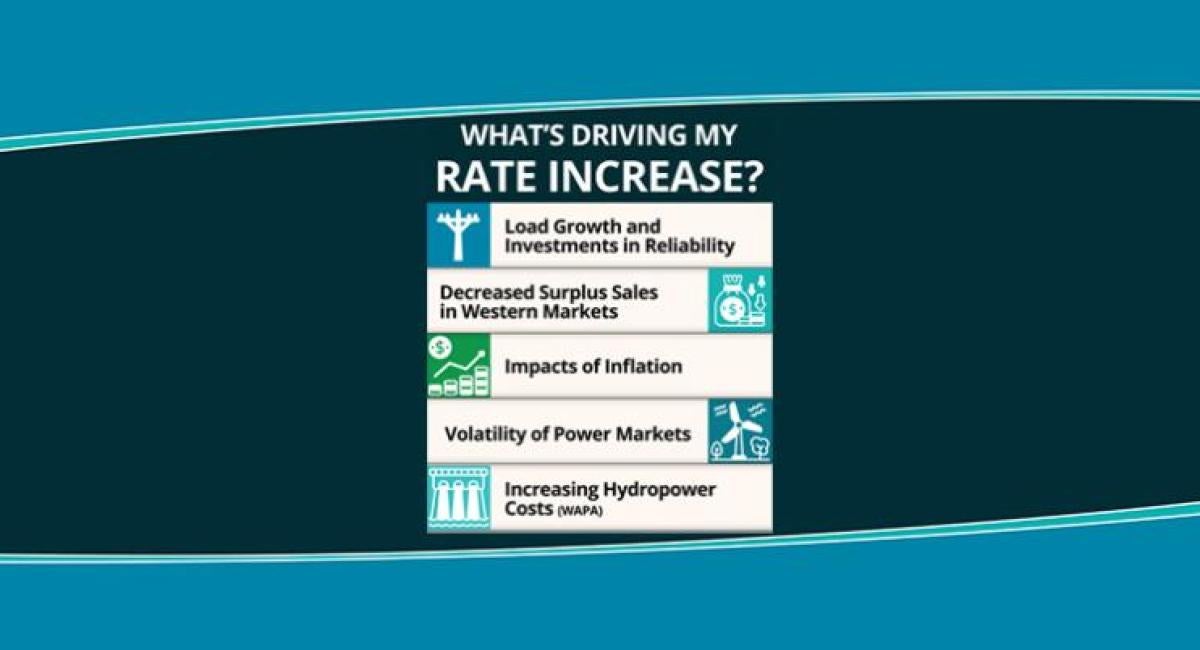
Sioux Valley Energy
General Manager/
Chief Executive Officer
For the last several months in this column and in my monthly manager videos, I have been discussing an upcoming rate increase that we expected to implement in early 2025. The Sioux Valley Energy Board of Directors did approve an overall average rate increase of 4.9% starting January 1, 2025 during their November meeting. Members will see the rate change on their February billing statement, which reflects January energy usage. Rate adjustment percentages will vary depending on members’ specific energy (kWh) usage.
While it is never fun to announce a rate adjustment, the increases are necessary due to higher power supply costs. Sioux Valley Energy has two wholesale bulk power providers – Basin Electric Power Cooperative and the Western Area Power Administration or WAPA. Unfortunately, both entities have announced rate increases for 2025. WAPA also will increase rates in 2026, and it is anticipated that Basin will do the same.
There are five key drivers of power supply rate pressures: Load Growth and Investments in Reliability; Decreased Surplus Sales in Western Markets; Impacts of Inflation; Volatility of Power Markets; and Increasing Hydropower Costs.
1. LOAD GROWTH AND INVESTMENTS IN RELIABILITY: Basin Electric is making significant investments in new generation and transmission facilities to support member load growth across its entire system, and it’s critical to invest in existing facilities to maintain reliability. To accommodate this growth, Basin Electric is investing approximately $8 billion over the next 10 years in transmission and generation assets to ensure reliable electricity for our members.
2. DECREASED SURPLUS SALES IN WESTERN MARKETS: Market dynamics have been impacted by changes in the generating fleet in the western part of the United States. Increasing amounts of hydro and renewable energy generated in the western market are often lower priced than what our wholesale power supplier (Basin Electric) can produce it for. This limits Basin Electric’s ability to sell excess generation to the western markets.
3. IMPACTS OF INFLATION: There have been cost increases for internal labor, contracted labor, materials, and maintenance, in addition to higher costs of borrowing money (higher interest rates) and increased insurance premiums for Basin Electric.
4. VOLATILITY OF POWER MARKETS: Power markets have become more volatile, resulting in dramatic price movements. Increasing intermittent generation such as wind and solar, swings in natural gas prices, and increasing electricity demand are primary contributors to volatility. While this is managed through generation and hedging, the cost of this is increasing for Basin Electric.
5. INCREASING HYDROPOWER COSTS: As for the Western Area Power Administration (WAPA), the top reason for its rate increase is drought. Dams and hydropower facilities did not generate enough power due to drought, which forced WAPA to purchase power to meet its obligations. It is also dealing with increased operation and maintenance costs for things like material and labor.
You will see the specific rate adjustments for the most common rate classifications on Page 10 of this edition of the newsletter. If you would like to calculate how that will impact your individual bill, you can either give one of our member service representatives a call at 877-511-8062 or you can log on to our dedicated rate adjustment webpage. On the webpage, we have FAQs, energy assistance resources, ideas for saving energy and much more.
As I end my column this month, I want to wish each of you a safe and peaceful Christmas and New Year.



